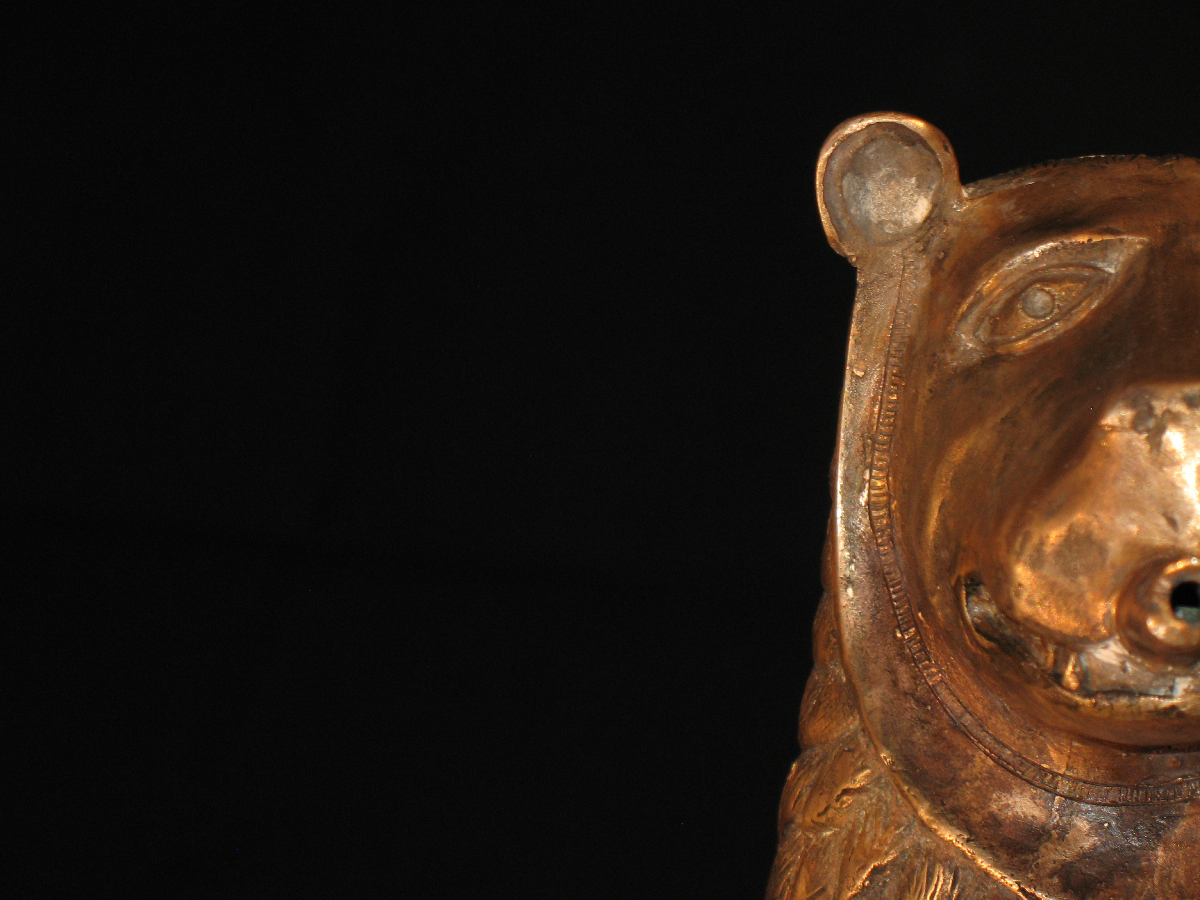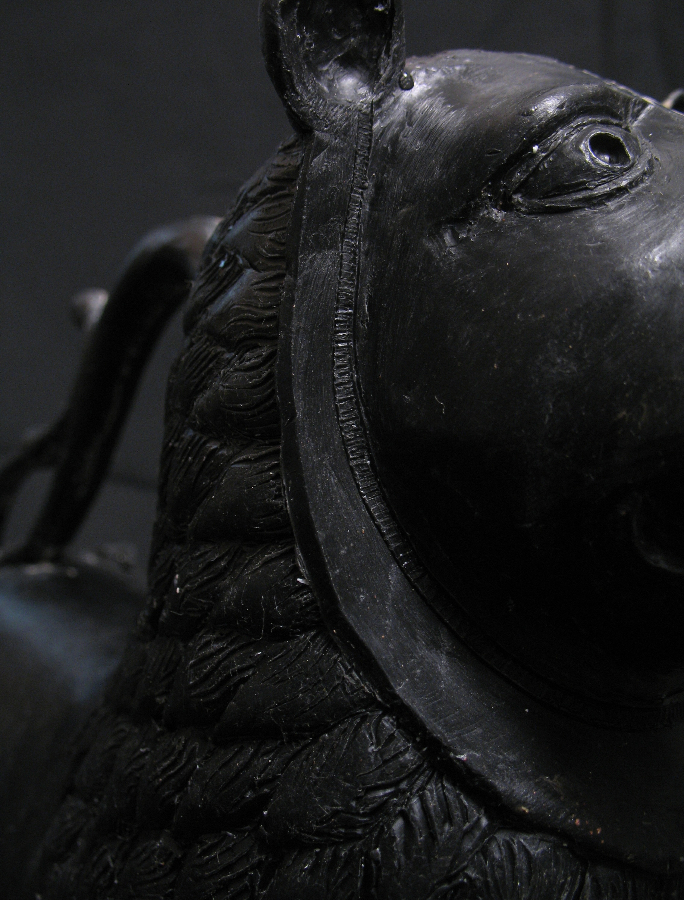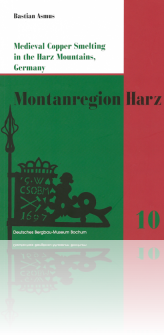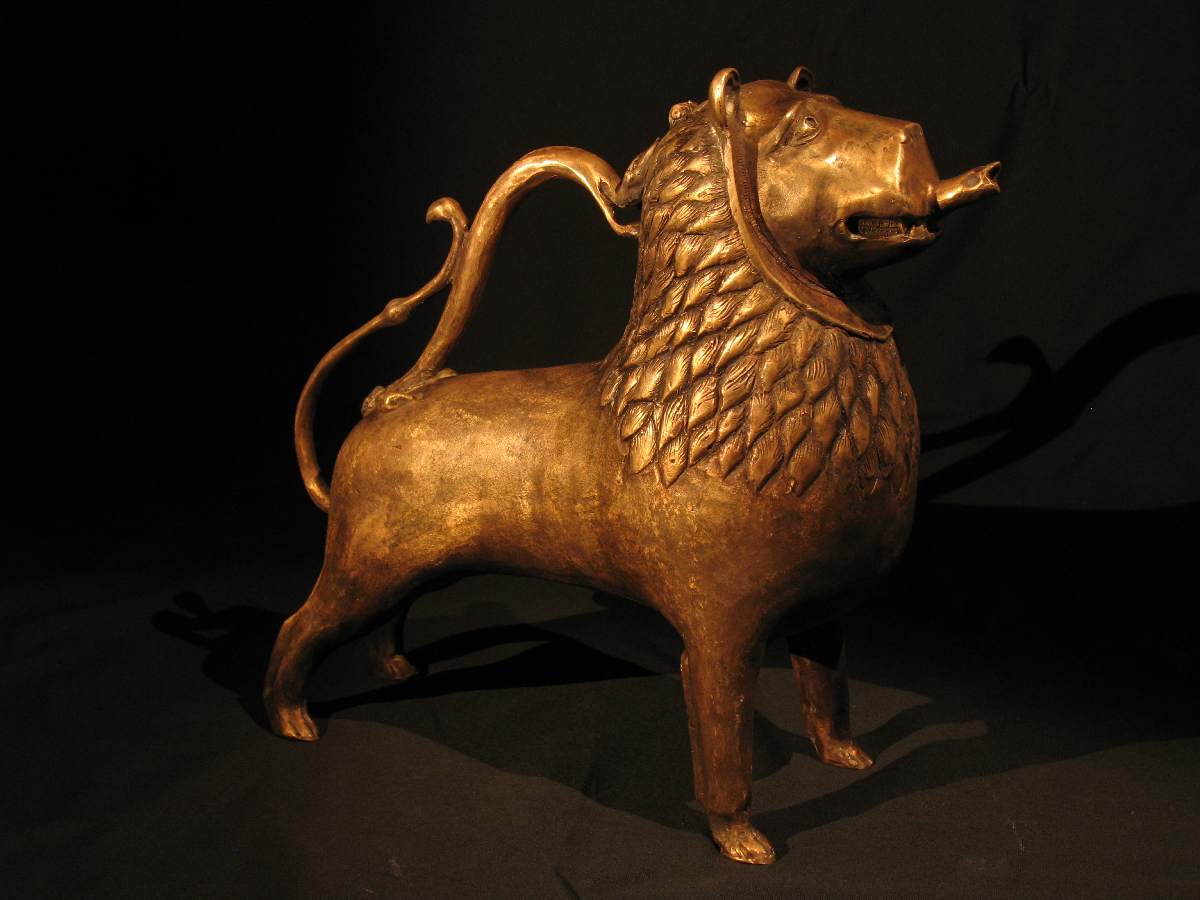Jun
30
2013
Bastian Asmus
[tab: Description]
Bastian Asmus 2012:
Medieval Copper Smelting in the Harz Mountains, Germany (= Montanregion Harz, Bd 10 [Hg. Christoph Bartels, Karl Heinrich Kaufhold und Rainer Slotta]), Bochum (Veröffentlichungen aus dem Deutschen Bergbau-Museum Bochum Nr 191), 2012, ISBN 13: 978-3-937203-63-8
395 pages, english, colour, Appendix for microscopic identification (reflected polarising lihjt microscopy) of slag phases, metal phases, ore minerals and their analysis by SEM-EDS, WDX and EPMA-WDS as well as XRF for bulk chemical characterisation.
44,- Euro
Medieval copper from the Harz
The work deals with the evaluation of a high medieval smelting site in the Harz, near the UNESCO World Heritage sites Rammelsberg and Goslar. With more than 1000 m2 excavated it is to date the most extensive archaeometallurgical investigation of a smelting site in medieval central Europe. It is a site where the polymetallic Rammelsberg ore was smelted to produce copper, lead and silver. The site can be considered as a typical example of a high medieval smelting site in the Harz. Particular emphasis was placed on an interdisciplinary approach which drew upon historical, archaeological and material scientific sources.
[tab: abstract]
Abstract
The Rammelsberg deposit in the Harz mountains in Germany is among the largest metal deposits in the world and has been in continuous use for more than a millennium. There is much controversy as to the nature of the metals produced and the processes involved from the ores of this deposit. This thesis deals with the largest and most accurately excavated smelting site of the high medieval period in the Harz mountains called Huneberg and may be regarded as typical for region and period.
Traditionally historians connect the Rammelsberg with silver production, the mining historians, however point out that the deposit is too poor in silver and that copper was produced in the high medieval period. Modern economical literature classifies the Ram- melsberg as a lead-zinc deposit.
To contribute towards the understanding of these questions an archaeometric study of archaeometallurgic waste- and byproducts, such as slag, furnace lining, furnace wall, litharge and spilled metal drops was undertaken. It builds the base of the interpretation of the metallurgical activities that have taken place at the Huneberg and is contrasted with previous studies. It is suggested that copper, lead and silver in form of argentiferous lead were produced on site, using a complex multi-step process, taking full advantage of the numerous structural features of the site, e.g. the three furnaces present on the site. Successive smelting episodes produced black copper of increasing purity as well as a rather rich argentiferous lead. Because the site is similar to may other sites it is further suggested the mode of metal production at the Huneberg followed a more or less stringent set of recipes and traditions. The mass of 1600 kg slag recovered from the site suggest a copper production of some 600 kg or less, depending on the ore quality. Lead is thought to have been produced in similar quantities, which in turn would mean that the site produced also 1.4 kg of silver during its operation.
[tab: Order info]
Order
44,- Euro plus P&P
Online shop of the German Mining Museum
[tab:END]

no comments | posted in Archaeometallurgy, Science
Jun
28
2013
Bastian Asmus

Sand moulding, or rather the casting in naturally bonded sand can be traced back to 17th century AD originating in France. Modern casting industry’s demand of constant quality of casting sands led to a decline in the use of sand which is bonded naturally. A few art foundries in Germany, though, are still knowledgeable therein and use it for casting purposes products. Due to the high expenditure of human labour it is only a question of time until all art foundries will work with the lost-wax process.
The main difference to modern casting sands are the utilized binders. In naturally bonded sand this is usually a percentage of clay. In industrial sand they are Bentonite (mainly a clay mineral called Montmorillonite), Furans, Phenolic resin or similar chemical compounds. Since this page is concerned with archaeometallurgy we will dismiss all the explanations on modern casting technologies.
The stop motion animation shows the fabrication of a green sand mould with naturally bonded sand. It is a reconstruction of a Zeiss Junior microscope foot. This mould was made for aluminum casting.
Moulding with naturally bonded sand
Since sand on its own is not enough to produce a sand mould, a frame for holding the sand in place is needed. In foundry terms this is referred to as a flask. Flasks are usually rigid frames without fixed bottom or top and consist of two parts: a lower one also known as drag and an upper one which is called cope. So called flask pins at the sides of the cope and drag ensure a proper alignment of upper and lower half during moulding and later, once the pattern is withdrawn, during pouring.
The sand is moist or green when it is compressed into the flask, and has to be dried in a kiln before pouring. Does sand really stay in the mould!? Two processes are responsible for the stability of the sand once it is compressed. (a) The dilatant nature. (b) The sand has 8-15% clay as binder and up to 5% of water contents.
A simple test is to compress a handful of sand and throw this about half a meter into the air, and if you can subsequently catch it as a whole, you might just have a good moulding sand. There are other important criteria to be matched: Permeability, refractoriness and a fine grain for surface smoothness. Fine quartz sand (or rather coarse silt) fulfills all conditions perfectly, if there is a clay contents between 8-15 wt%. Moulding with naturally bonded sand is easily one of the most fascianting techniques, because of its simplicity and its apparent defiance to obey the law of gravity. Once you have seen a flask -a metallic frame that has no bottom and no lid- being turned without the sand dropping out of it you will surely believe me.
Moulds, patterns & co
Best suited for sand casting are simple patterns without too many undercuts. Because the pattern needs to be withdrawn to create the mould cavity, the flask consists of two halves. To mould a pattern you first have to decide were the parting of the mould is. The parting is that line, where the mould cuts the cavity in two halves. It is evident that neither side can have undercuts, or you cannot withdraw your pattern.
First we create a false half, which holds the pattern in place: The pattern is buried up to the parting line of the pattern in sand. The sand is compacted and smoothed to produce a nice parting surface arounf the pattern. Then you powder this surface with a parting agent, to prevent the green sand sticking to the model or the parting surface. Put on the cope, put finely sieved sand on top of pattern and parting surface and compact it carefully with your hands. Put more sand into the cope and compress it with tampers and mallets. The whole flask is now turned, and the false half (drag) removed. It can be discarded and is shaken out. Put the drag back on, and repeat the steps previously described for the cope. After the drag has been made it is removed again, however, this time carefully, as to avoid damage to the mould cavity (You might want to lift the drag by pushing wedges into the four corners of the flask and thus to lever the drag slowly and in a controlled way from the cope. After that you tap the pattern and withdraw it carefully. Now you have produced the mould cavity. Downsprue, sprues and vents have to be cut into the sand, so the metal melt can reach the cavity. After drying the mould in the kiln it is ready for pouring. Cope and drag are reunited, clamped and metal is poured in. After casting shake the sand: your first cast!
What happens with more complicated patterns, e.g. sculptures? Can you cast them in sand? Yes, you can; if I did not manage to confuse you as yet, you may read further on the Stückform process here.
2 comments | posted in General, Metal casting
Jun
27
2013
Bastian Asmus
 A lion aquamanile from Halberstadt, Germany
A lion aquamanile from Halberstadt, Germany

The lion aquamanile you can see here I modelled after the aquamanile from Halberstadt. It is to date one of the very few aquamaniles that is still in its original context (Mende 2008). Aquamaniles, somtimes also referred to asaquamanale, aquimanile, aquamnilia is composed of the the two latin words aqua, for waterr und manus, for hand. The term aquamanile was used differently in medieval times than today: it mostly referred to the receptables of the water in the form of dishes or bowl. In contrast the vessel for pouring water was called urceus, i.e. latin for ewer (Wolter-von dem Knesebeck 2008, 217). Aquamaniles were used for the ritual cleansing of the priest before the mass. Apart from this ecclesiastic use aquamaniles were also to be found in secular households of high social status where they were used before meals.

Detail shot of the wax model
During the last month or so I modelled this 13th century aquamanile and cast it in bronze in my casting workshop using the lost wax technique. The model was made from wax and was prepared over a core of loam, just as it was described by the benedictine monk and artificer Theophilus Presbyter in his schedula diversarum artium in the chapter on the production of the cast incense burner. See here how the article on the casting of the aquamanile went in the reconstructed medieval loam mould.
To this end wax plates were applied to the loam core. This is also described by Theophilus. An alternative way to produce a wax layer of sufficient thickness would have been the repeated dipping into liquid wax. This however was not mentioned by Theophilus and therefore not used. After the wax plates had been applied the finer details, such as the mane or the eyes of the lion were shaped.

Detail shot of the aquamaniles face
The aquamanile weighs 3,6 kg and holds 1.35 l of water. This reconstructed aquamanile may be seen in its original function at the events of the french re-enactment project Fief et chevalerie. Contact me if you would like to purchase this or any other aquamanile.
References:
Ursula Mende 2008.
Catalogue entry 52 in: Michael Brandt (Hrsg), Bild & Bestie. Hildesheimer Bronze der Stauferzeit. 378p. 2008.
Harald Wolter-von dem Knesebeck 2008.
Zur Inszenierung und Bedeutung von Aquamanilien, in: Michael Brandt (Hrsg), Bild & Bestie. Hildesheimer Bronze der Stauferzeit. 2008.
Medieval bronze aquamanile in the form of a lion
Image 1 of 7
Dies ist eine Neuschöpfung des mittelalterlichen bronzenen Löwenaquamaniles von Halberstadt.
Das Original ist im Halberstädter Dommuseum.
This is a lion aquamanile that was made after the medieval bronze aquamanile of Halberstadt. The original is in the Halberstädter Dommuseum.
2 comments | tags: Aquamanile, aquamanilia | posted in Aquamanile, Archaeometallurgy, General, Metal casting, practical metallurgy, Reconstructions




